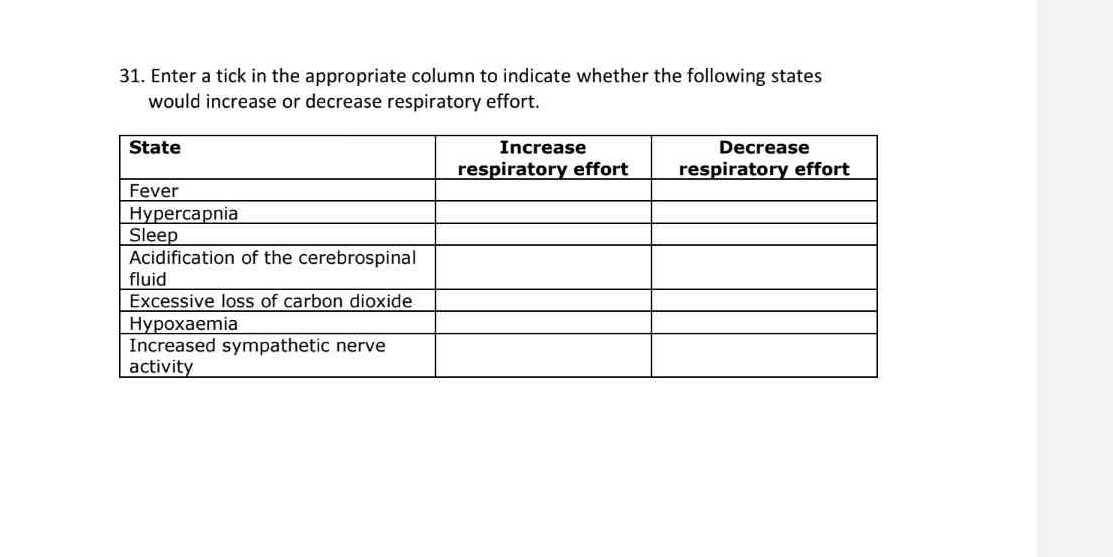Enter a tick in the appropriate column to indicate whether the following states would increase or decrease respiratory effort: Fever, Hypercapnia, Sleep, Acidification of the cereb... Enter a tick in the appropriate column to indicate whether the following states would increase or decrease respiratory effort: Fever, Hypercapnia, Sleep, Acidification of the cerebrospinal fluid, Excessive loss of carbon dioxide, Hypoxaemia, Increased sympathetic nerve activity.

Understand the Problem
The question is asking the user to indicate whether specific physiological states would lead to an increase or decrease in respiratory effort. This involves understanding the effect of each state on respiration.
Answer
Fever: Increase, Hypercapnia: Increase, Sleep: Decrease, Acidification: Increase, Loss of CO2: Decrease, Hypoxaemia: Increase, Sympathetic activity: Increase
Fever - Increase, Hypercapnia - Increase, Sleep - Decrease, Acidification of the cerebrospinal fluid - Increase, Excessive loss of carbon dioxide - Decrease, Hypoxaemia - Increase, Increased sympathetic nerve activity - Increase
Answer for screen readers
Fever - Increase, Hypercapnia - Increase, Sleep - Decrease, Acidification of the cerebrospinal fluid - Increase, Excessive loss of carbon dioxide - Decrease, Hypoxaemia - Increase, Increased sympathetic nerve activity - Increase
More Information
Increased respiratory effort is commonly seen with conditions that demand more oxygen or need to expel excess carbon dioxide, while decreased effort might occur during rest or with reduced respiratory drive.
Tips
Remember that any condition increasing metabolic demand or affecting respiratory gases usually raises respiratory effort.
AI-generated content may contain errors. Please verify critical information